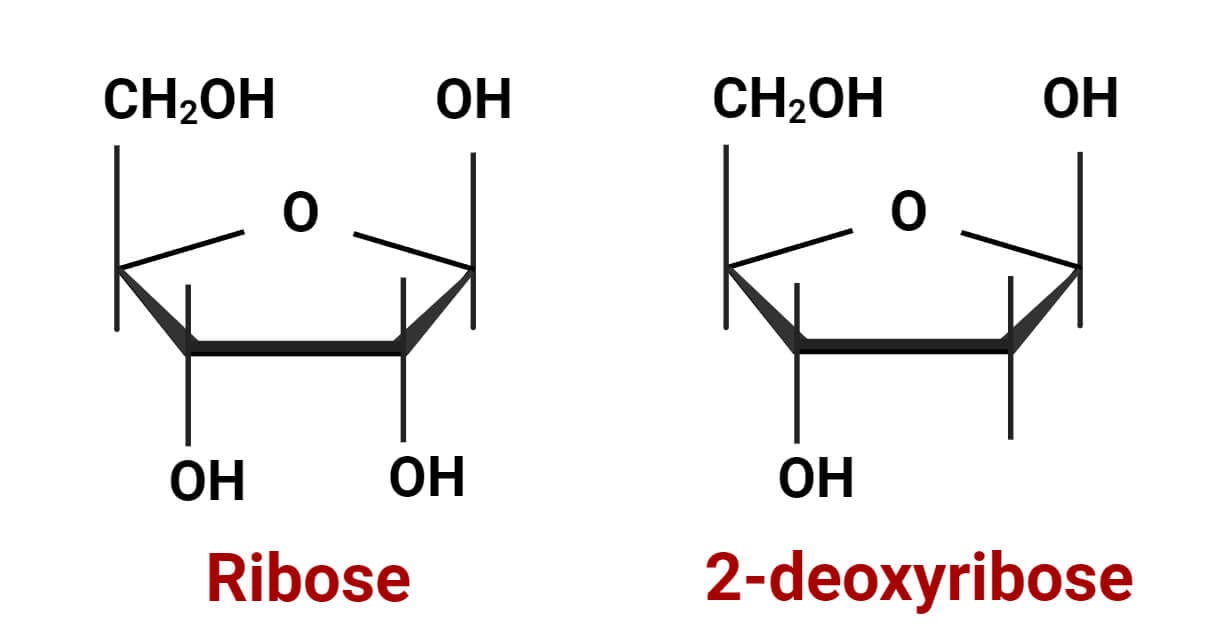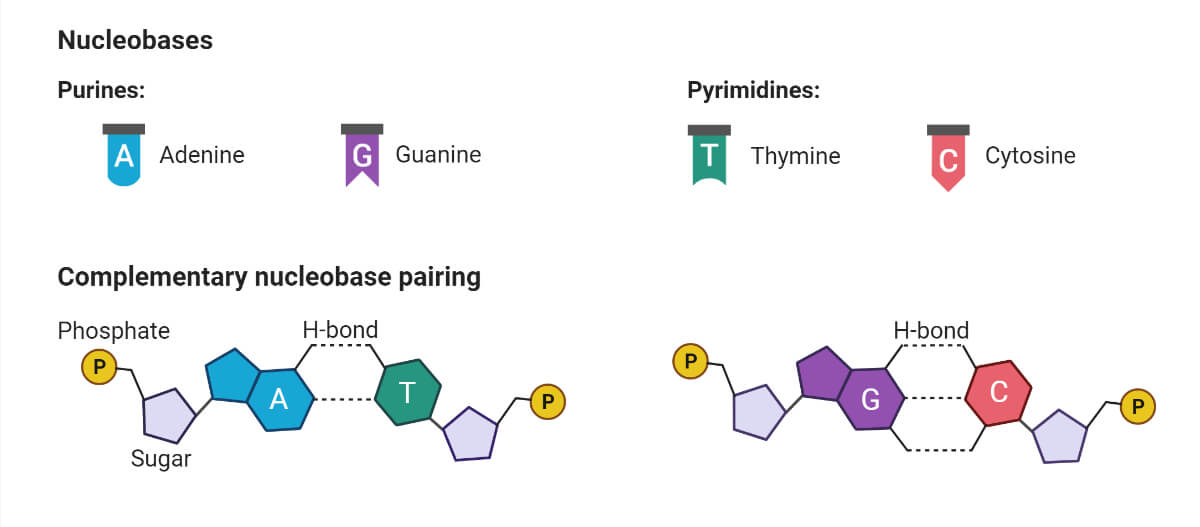Carbohydrates are one of the most important biomolecules essential for various cellular processes. These organic compounds are made up of carbon, hydrogen, and oxygen atoms. Based on their structure, they come in various forms, from simple sugars to complex polysaccharides.
Pentose sugar is a type of simple sugar or monosaccharide that plays a fundamental role in various biological processes. Pentose sugars are essential components of nucleotides, which are the building blocks of DNA and RNA.

Pentose sugar has five carbon atoms. Its chemical formula is C₅H₁₀O₅. The most well-known examples of these sugars are the deoxyribose sugar of DNA and the ribose sugar of RNA. In addition to deoxyribose and ribose, other examples of pentose sugar are Arabinose, Xylose, Ribulose, Xylulose, etc.
Interesting Science Videos
Classification of Pentose Sugar
Pentose sugars can be classified into two main categories:
Aldopentoses
Aldopentoses are a type of pentose sugar that contains an aldehyde group (-CHO) on one of its carbon atoms. Ribose, found in RNA, and deoxyribose, found in DNA, are examples of aldopentoses. Ribose contains the aldehyde group and is a typical aldopentose in RNA. Deoxyribose is also an aldopentose, derived from ribose but lacking one oxygen atom.
Ketopentoses
Ketopentoses are another type of pentose sugar that contains a ketone group (C=O) on one of the carbon atoms. One example of ketopentose is ribulose, a vital sugar involved in the Calvin cycle, a process in photosynthesis. Xylulose is another important ketopentose. It participates in various metabolic pathways, including glycolysis and the pentose phosphate pathway, contributing to energy generation and other essential biochemical processes.
Structural Forms of Pentose Sugars
- Pentose sugars can exist in two primary structural forms: linear and cyclic. These forms are interchangeable in aqueous solutions.
- In the linear form, pentose sugars are arranged in a straight chain, with each carbon atom carrying a hydroxyl group (except for the first carbon).
- In an aqueous solution, pentose sugars tend to adopt a closed-ring structure. The most common cyclic form in pentoses is the furanose ring.
- The cyclic structure of pentose can also exist in either alpha or beta forms based on the orientation of hydroxyl groups in the first carbon atom.
- Pentose sugars also exhibit stereoisomerism, where atoms are arranged in the same order, but their spatial orientation differs.
- Based on the arrangement of functional groups around chiral carbon atoms, pentose can exist in two optical isomer/enantiomer forms: D- and L- forms.
Synthesis of Pentose Sugars
- One of the critical pathways involving pentose sugars is the Pentose Phosphate Pathway (PPP).
- In the PPP, pentose sugars, especially ribose-5-phosphate (R5P), are generated. R5P acts as a precursor for the synthesis of nucleotides.
- The ribose can be converted to deoxyribose through the process of deoxygenation. The enzyme ribonucleotide reductase catalyzes this process. It catalyzes the reaction that removes the oxygen atom, transforming ribose into deoxyribose.
- This pathway also generates NADPH, a vital molecule used in various cellular processes, including synthesizing fatty acids and other metabolites.
Role of pentose sugar in nucleotides
Nucleotides are the basic units of nucleic acids which act as the building blocks of DNA and RNA. Nucleotides contain three key components – a phosphate group, a nitrogenous base, and a pentose sugar. The pentose sugar forms the backbone of these nucleotides. Pentose sugars combine with phosphate groups and specific bases to form nucleotides. So, pentose sugars play a crucial role in the structure of DNA and RNA.
The two types of pentose sugars in nucleotides are:
- Ribose is a pentose sugar that is a component of RNA. It forms the backbone of the RNA molecule. Ribose can exist as L-ribose and D-ribose enantiomers. L-ribose is unstable in biological systems. So, living organisms primarily use D-ribose. D-ribose is the biologically functional form of ribose and is commonly found in nucleic acids, ATP, and other essential biomolecules.
- Deoxyribose is a modified form of ribose. It lacks one oxygen atom, which is removed from the second carbon in the carbon chain. Deoxyribose is a component of DNA that forms the backbone of the DNA molecule. It also exists in two optical isomeric forms: D-deoxyribose and L-deoxyribose.

Importance of Pentose Sugar
- Pentose sugar plays a fundamental role in the formation of DNA and RNA which carry genetic information in living organisms.
- Pentose sugar is involved in energy storage and production processes in the body. It is a component of molecules like ATP, NADH, NADPH, and FADH2, which are important in cellular energy transfer.
- Pentose sugar can form esters, such as phosphodiesters, when combined with phosphate which are important in various biochemical reactions.
- Pentose sugar also has numerous medical uses including the use of D-ribose in the managing conditions like congestive heart failure, myalgia encephalitis, chronic fatigue syndrome, and myocardial dysfunction.
- D-ribose is also recommended to reduce post-exercise discomfort, including cramps, pain, and stiffness and is used by athletes to enhance their performance.
References
- 4.4: Nucleic Acids – Biology LibreTexts
- aldopentose derivative (CHEBI:63373)
- Ch25: alpha and beta forms (ucalgary.ca)
- ketopentose derivative (CHEBI:63405)
- Lehninger, A. L., Nelson, D. L., & Cox, M. M. (2000). Lehninger principles of biochemistry. New York: Worth Publishers.
- Ouellette, R. J., & Rawn, J. D. (2014). Carbohydrates. Organic Chemistry Study Guide, 539-567. https://doi.org/10.1016/B978-0-12-801889-7.00026-
- Pentose Definition and Examples – Biology Online Dictionary
- Ribose | Structure, Properties, Synthesis, Facts & Summary (alevelbiology.co.uk)
